1968 and Its Afterlives
1968 and Its Afterlives is a curatorial collaboration between staff and research assistants at the Barnard Center for Research on Women, the Barnard Library and Archives, and members of Barnard Alumni Class of 1971. Its aim is to illustrate how the flashpoint of student and popular uprisings and politicization on issues of social justice were not discrete events, but instead reflect an important convergence of activist movements with broad social reverberations that continue shape our current political moment. The installation, which includes newspapers, posters, documents, and images, invites participants to dwell in a tripartite display that is temporally segmented into the periods before, during, and after the political protests of 1968. The exhibit renders the overlapping movements which came together in 1968 from labor activism, anti-war activism, feminist activism, LGBTQ activism to Black liberation using archival materials that speaks to the plethora of social justice issues and concerns Barnard students have been struggling for and continue to grapple with today.
Our deepest appreciation goes to Barnard Librarian, Shannon O’Neill and BCRW Research Assistant, Krish Bhatt, Maya Garfinkel and Linda Gordon for archival image research and contributions, and Katherine Brewster and Janet Price from the Class of 1971 for their guidance over the past year leading up to this important commemoration.
Pre-1968
The images below document historical protests that later converged in the events of 1968. They capture demonstrations in Harlem decrying gentrification, police violence and anti-Black racism. They provide vivid archival evidence of how the Harlem community and its leaders shaped the national stage. The images also document the struggle for workers’ rights as it traversed the Barnard campus, intersecting with the efforts of Columbia University’s labor organizers. We see images as well of anti-war protests showing how students made crucial connections between the military industrial complex and the university. Together, they tell a story of activism on multiple fronts that connected Barnard to the communities around it.
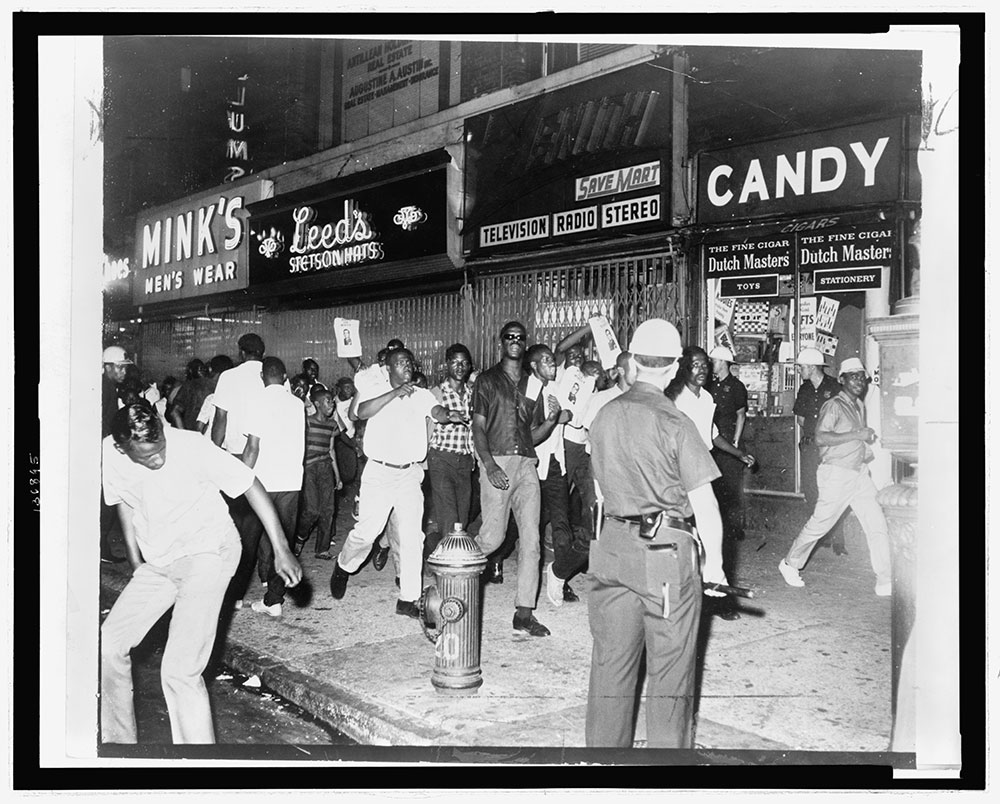
Following the murder of James Powell, residents of Harlem protest in the streets, carrying pictures of Lt. Thomas Gilligan the NYPD policeman who shot and killed the 15 year old Black boy. 1964.
Library of Congress
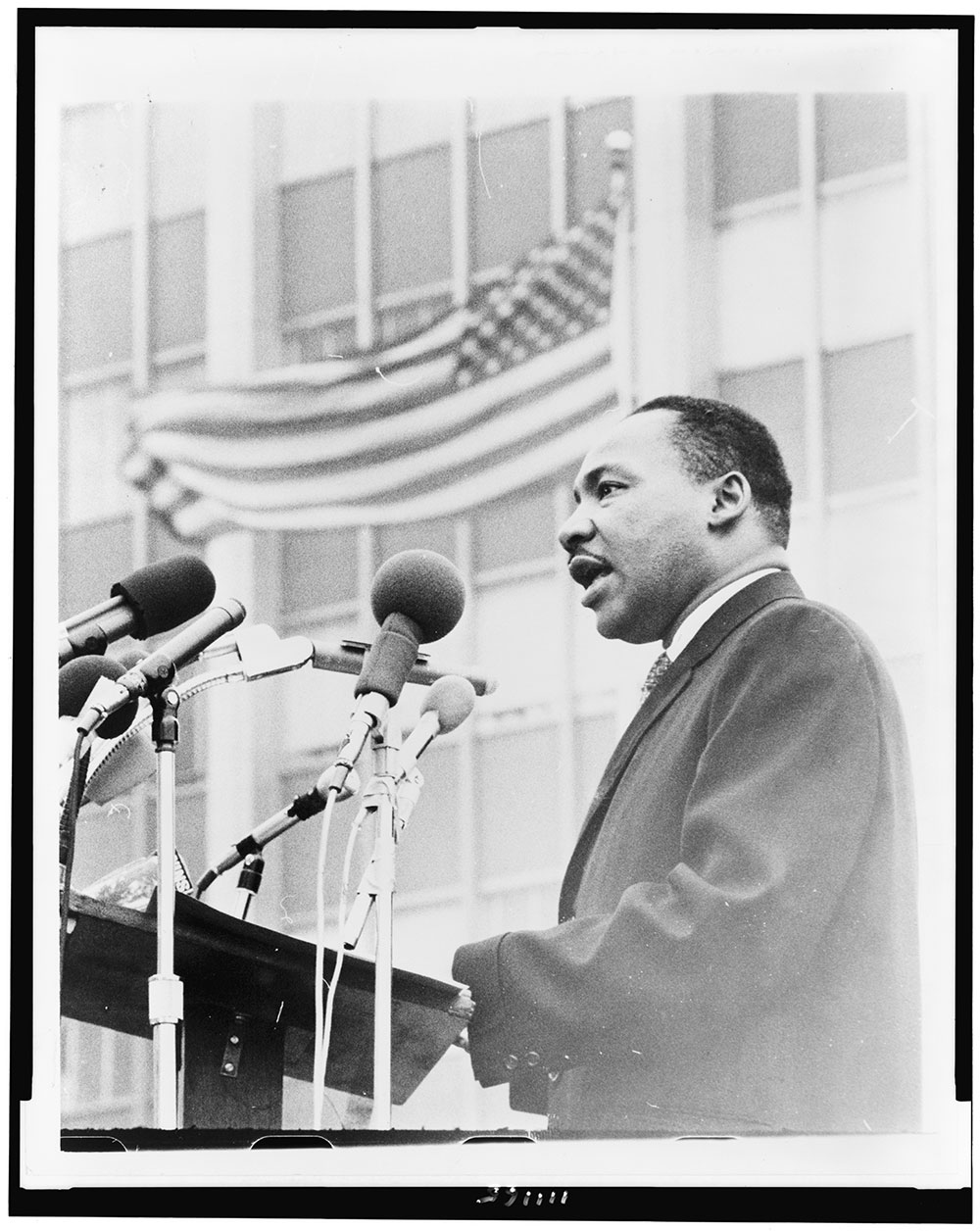
Martin Luther King, Jr., half-length portrait, facing left, speaking at microphones, during anti-war demonstration, New York City, 1967
Library of Congress
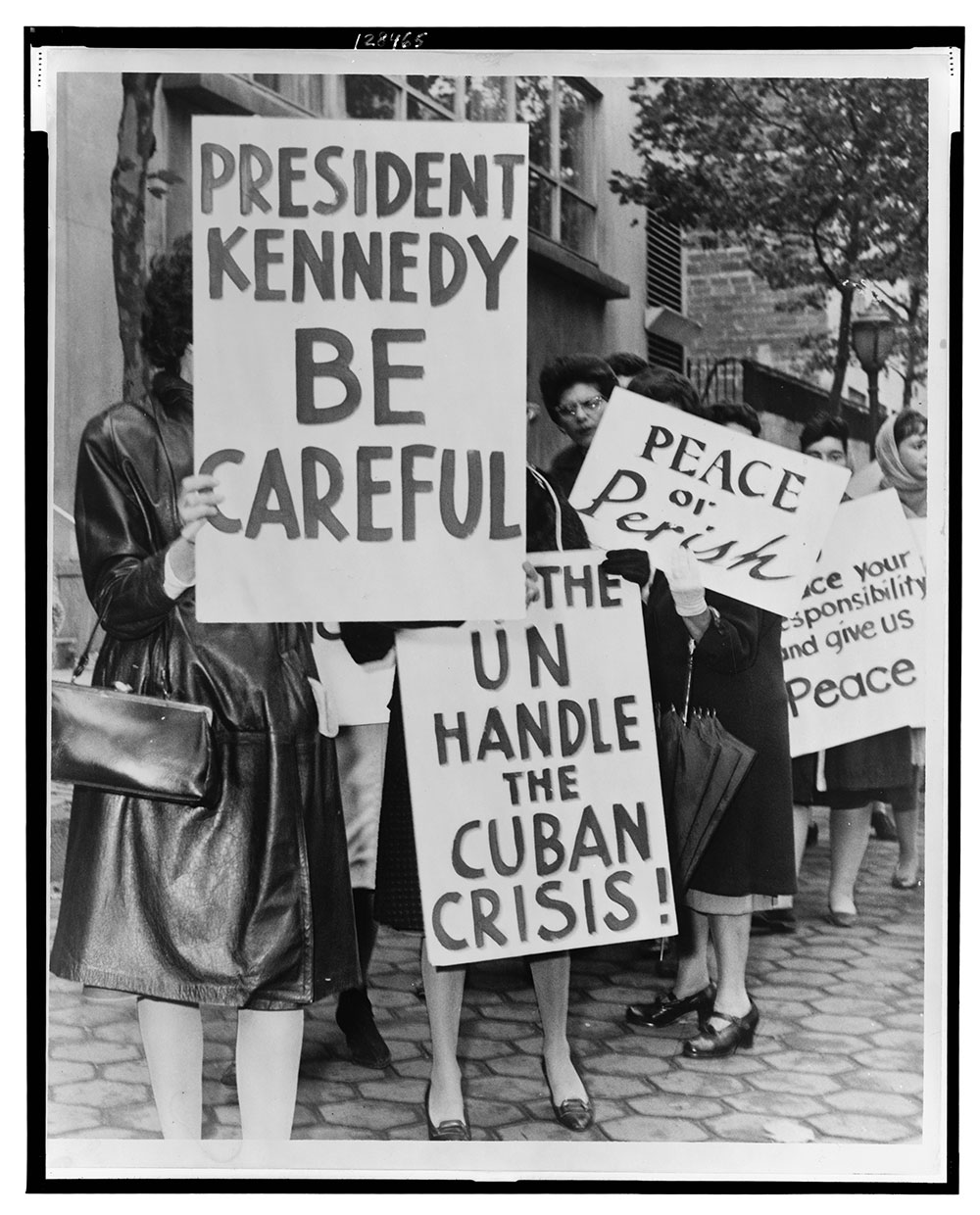
800 women strikers for peace on 47 St near the UN Building, 1962
From Library of Congress

Renée Vera Cafiero pickets US Army Induction Center, Whitehall Street, NYC, during the first gay picket at a US Army Induction Center, September 19, 1964
New York Public Library
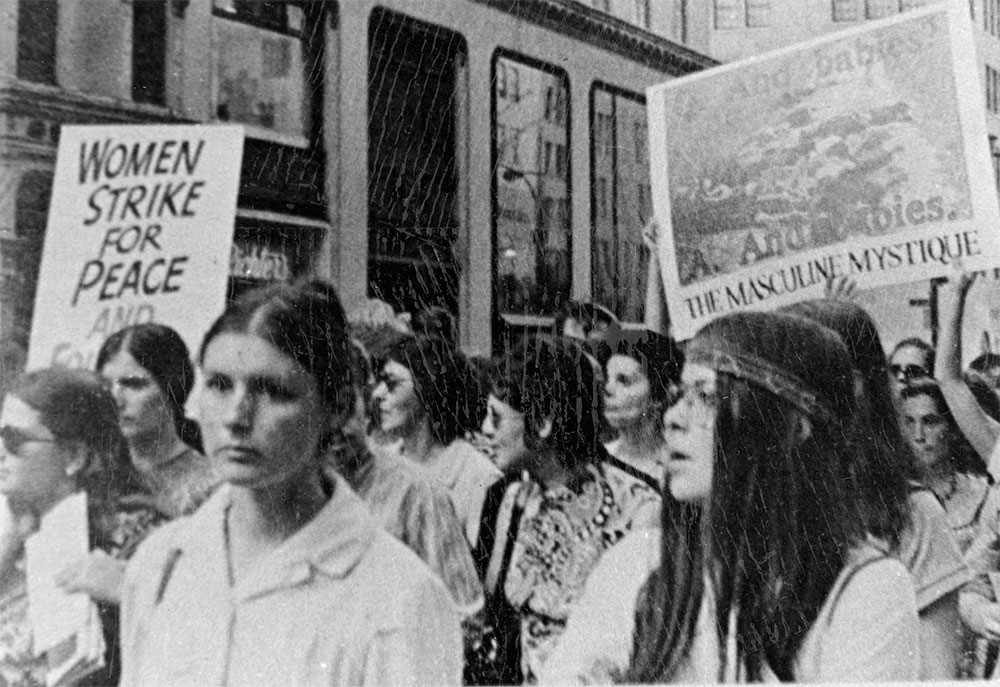
Women’s peace march. Sign on left: “Women Strike for Peace and… [cut off]”, sign on right: “Q. And babies? / A. And babies. / The Masculine Mystique”.
Barnard Archives and Special Collections.
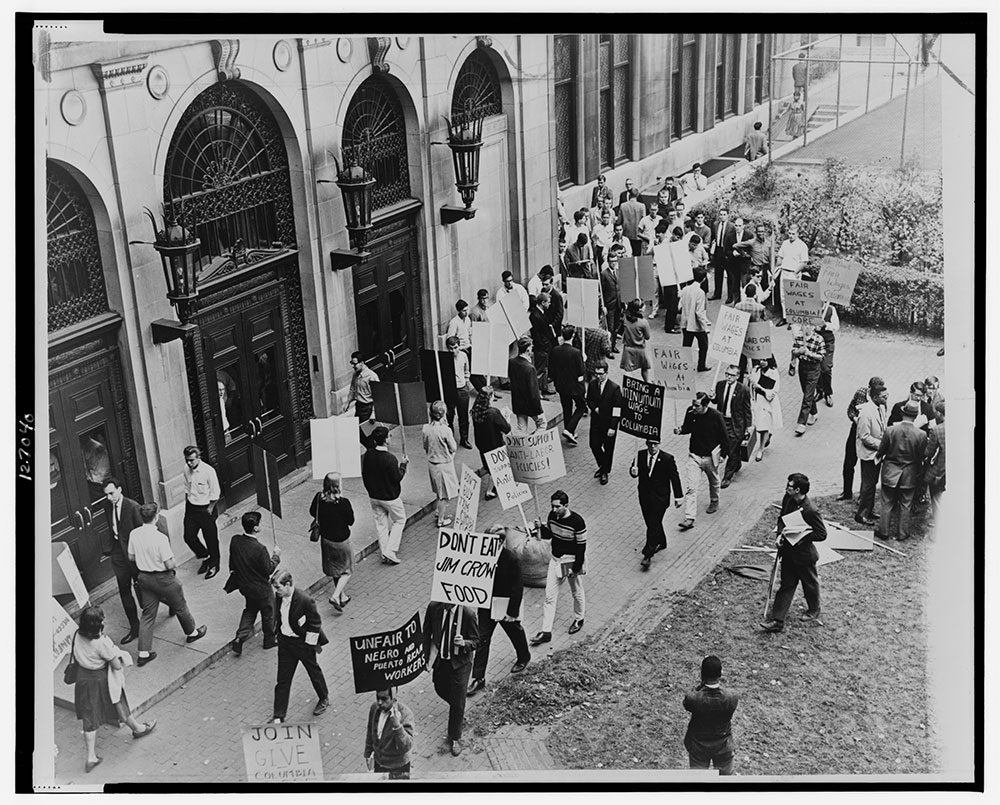
Congress of Racial Equality members carry picket signs outside Columbia University’s John Jay Hall in support of employee demands for union representation, 1964
Library of Congress
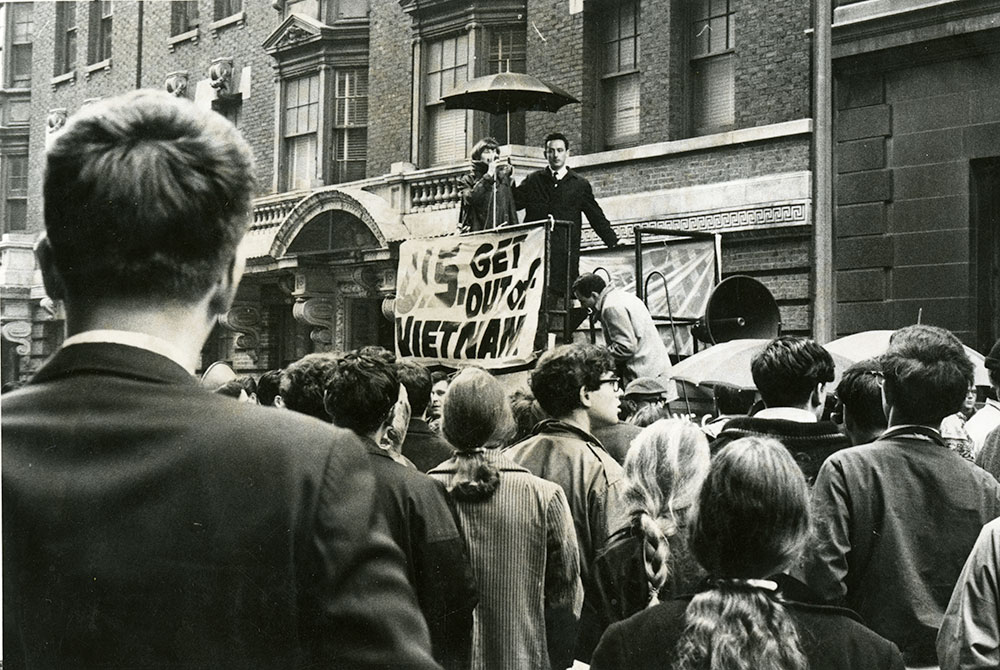
Students gather to protest United States involvement in Vietnam.
Barnard Archives and Special Collections.
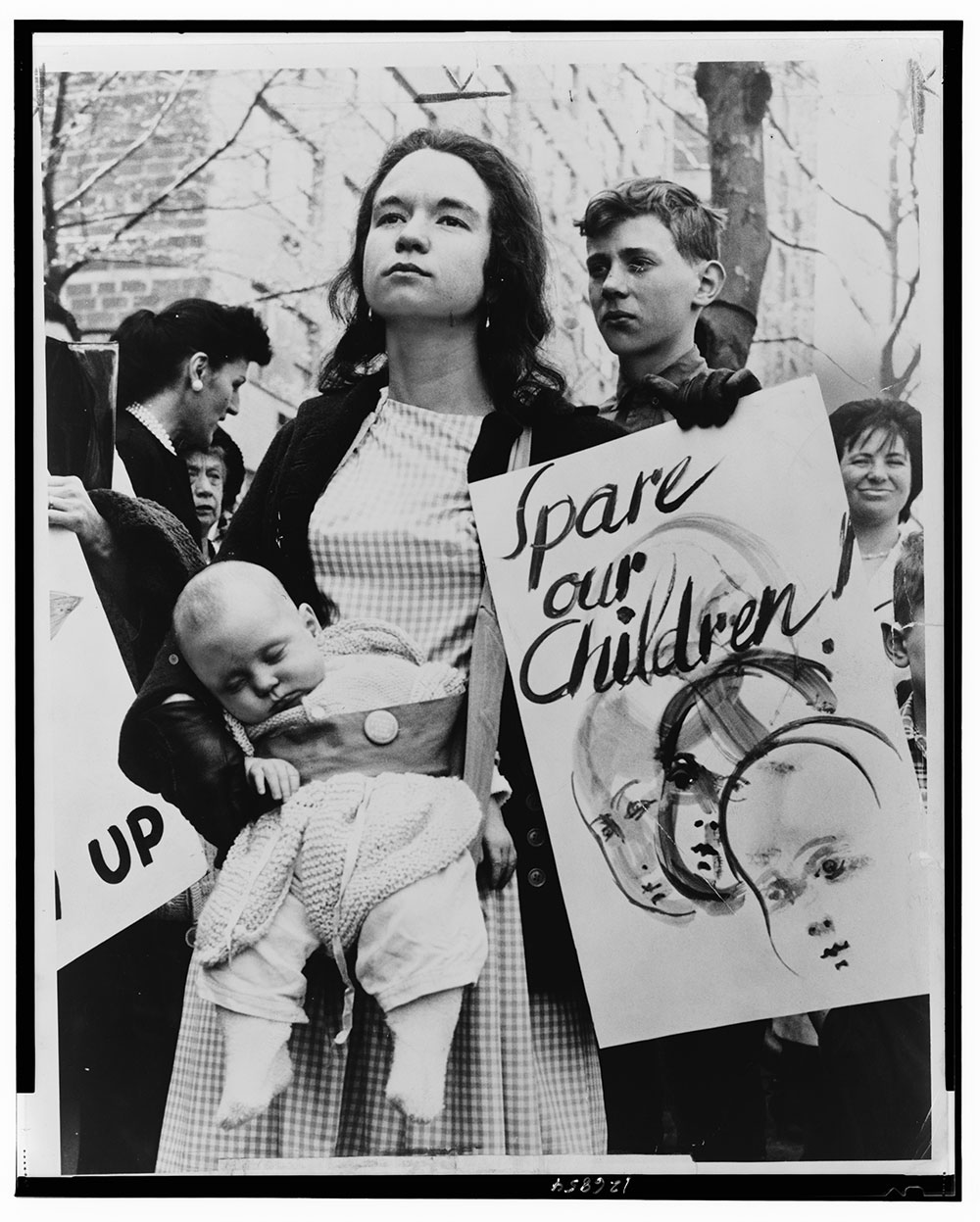
“Little Denise Davidson, 5 months old, sleeps peacefully while her mother, Mrs. Donald Davidson, of 278 Clinton St., Bklyn., marches with ban-the-bomb group outside the United Nations to protest resumption of A-[bomb] tests by the United States”, 1962.
From Library of Congress.
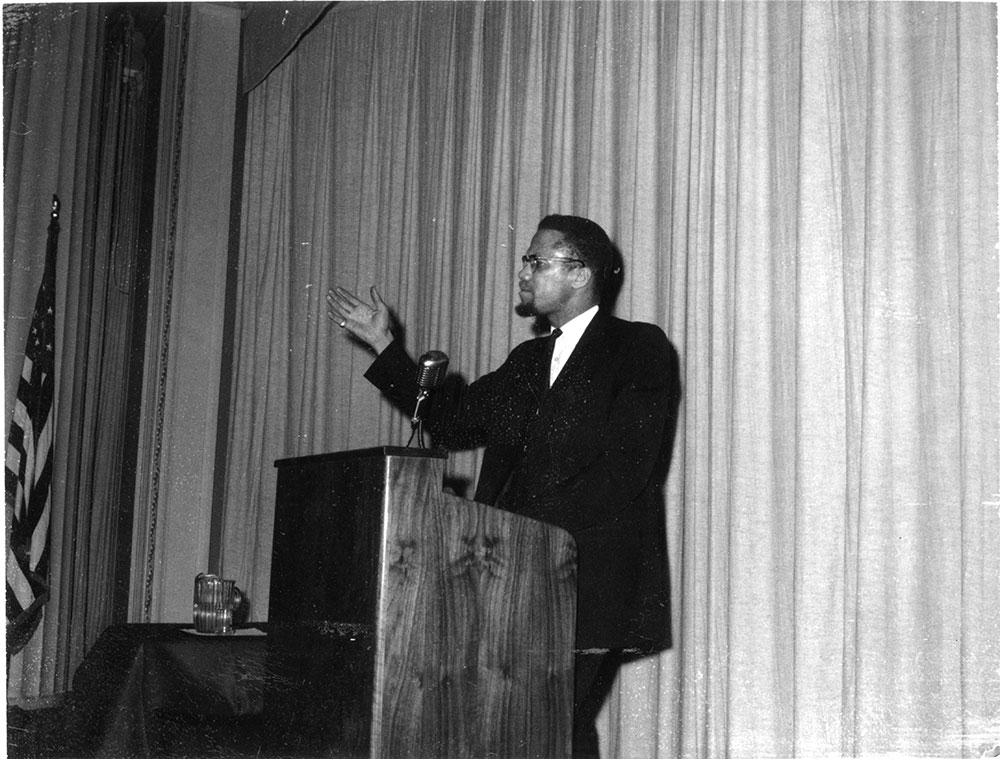
Malcolm X delivering a speech at Barnard College, February 18, 1965. This is the last speech he gave before his assassination three days later, on February 21, 1965.
Barnard Archives and Special Collections.
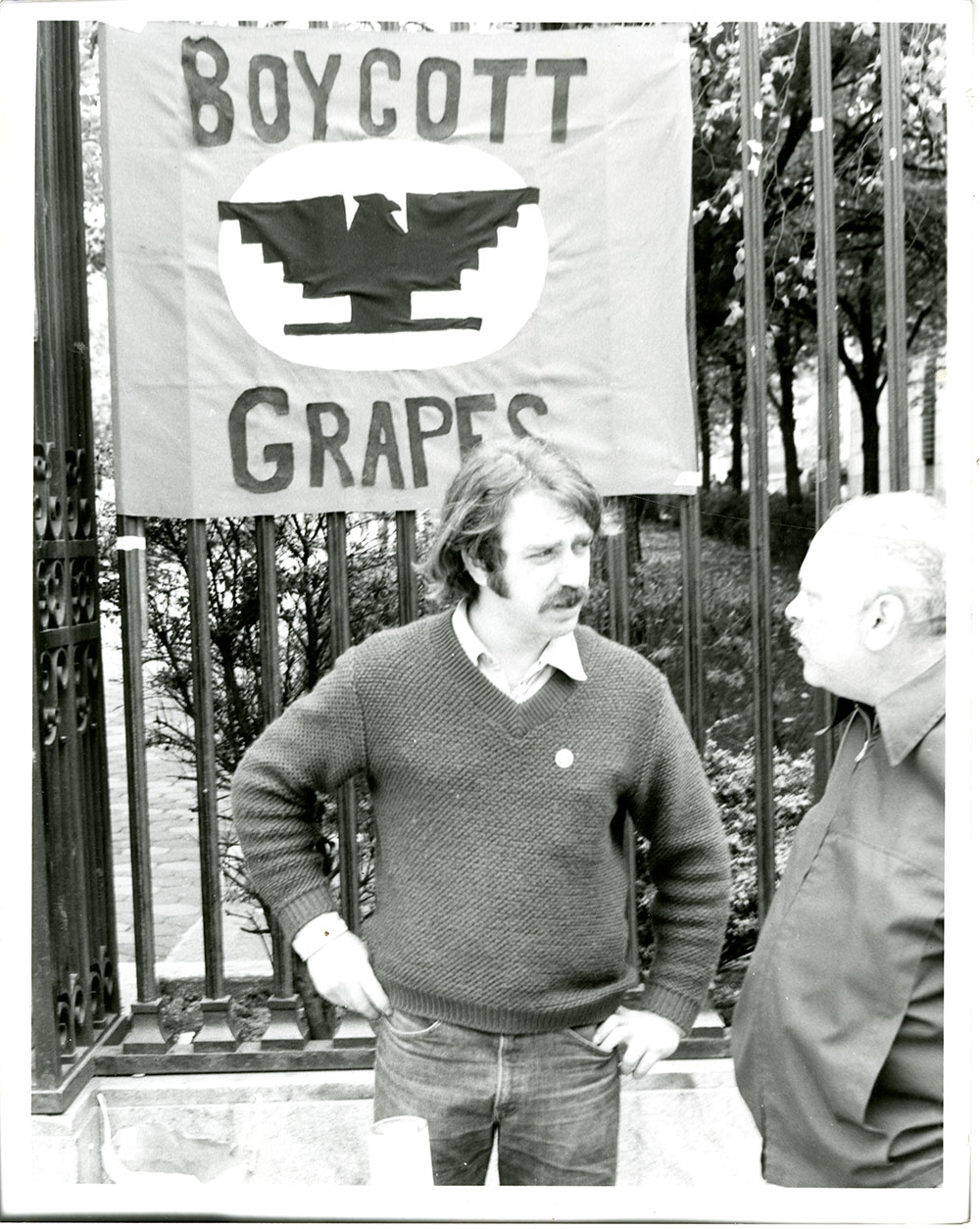
United Farm Workers
Library of Congress

CORE pickets in front of 125 North St., New York City(?), protesting abuses landlords and inequitable housing, 1964
Library of Congress
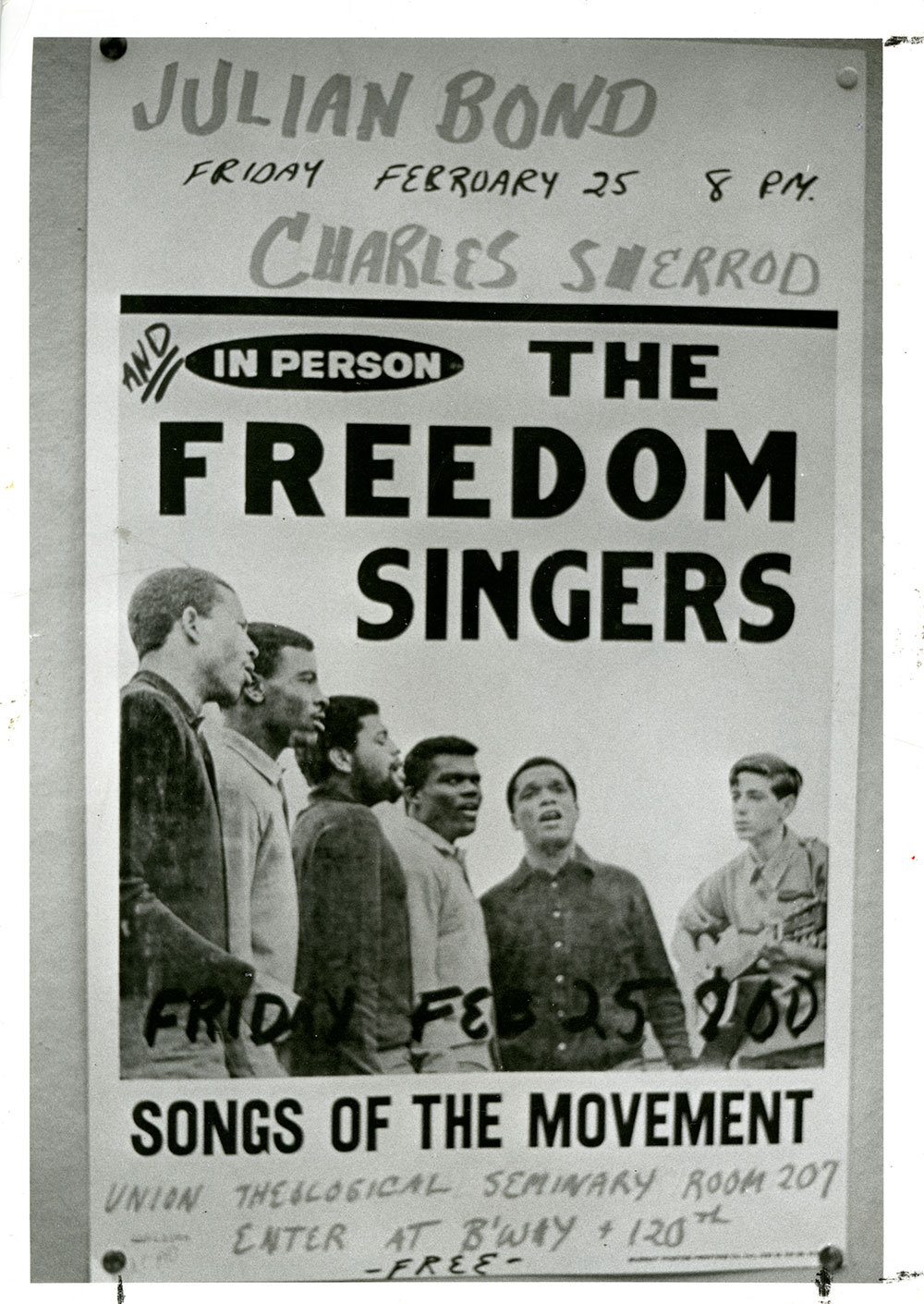
Sign for the Freedom Singers and Julian Bond at Union Theological, 1966
Barnard Archives and Special Collections.
1968
The images below document historical protests that later converged in the events of 1968. They capture demonstrations in Harlem decrying gentrification, police violence and anti-Black racism. They provide vivid archival evidence of how the Harlem community and its leaders shaped the national stage. The images also document the struggle for workers’ rights as it traversed the Barnard campus, intersecting with the efforts of Columbia University’s labor organizers. We see images as well of anti-war protests showing how students made crucial connections between the military industrial complex and the university. Together, they tell a story of activism on multiple fronts that connected Barnard to the communities around it.
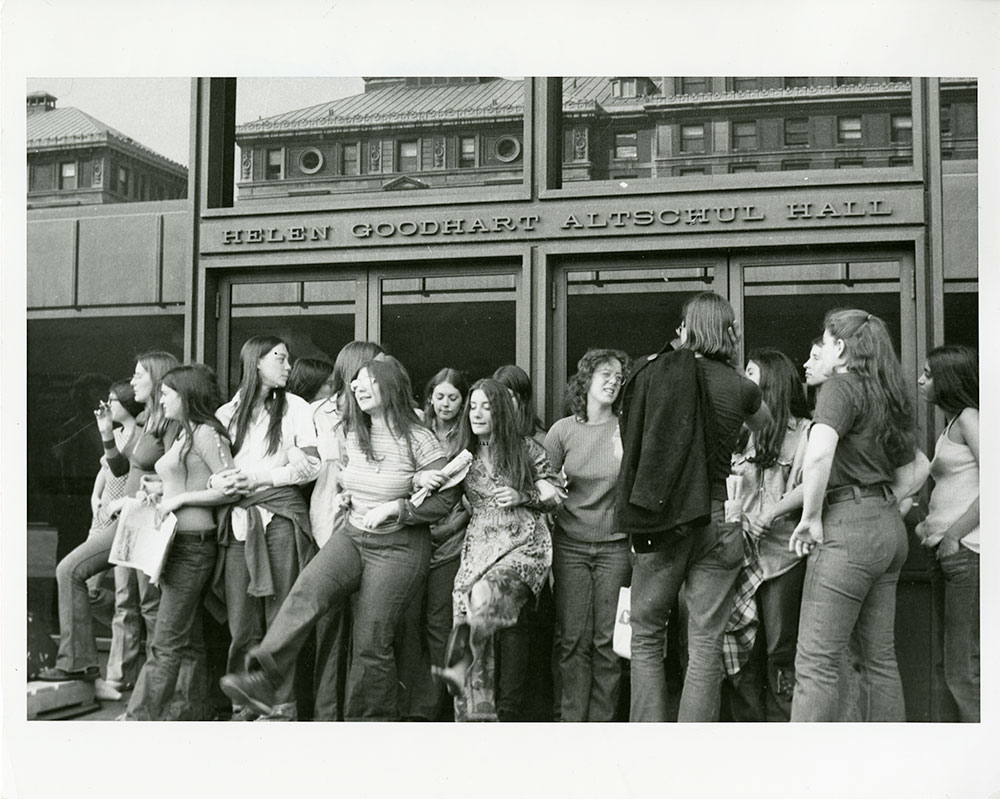
Student activists protest US intervention in Vietnam in front of Altschul Hall, during student strike in April 1972.
Barnard Archives and Special Collections
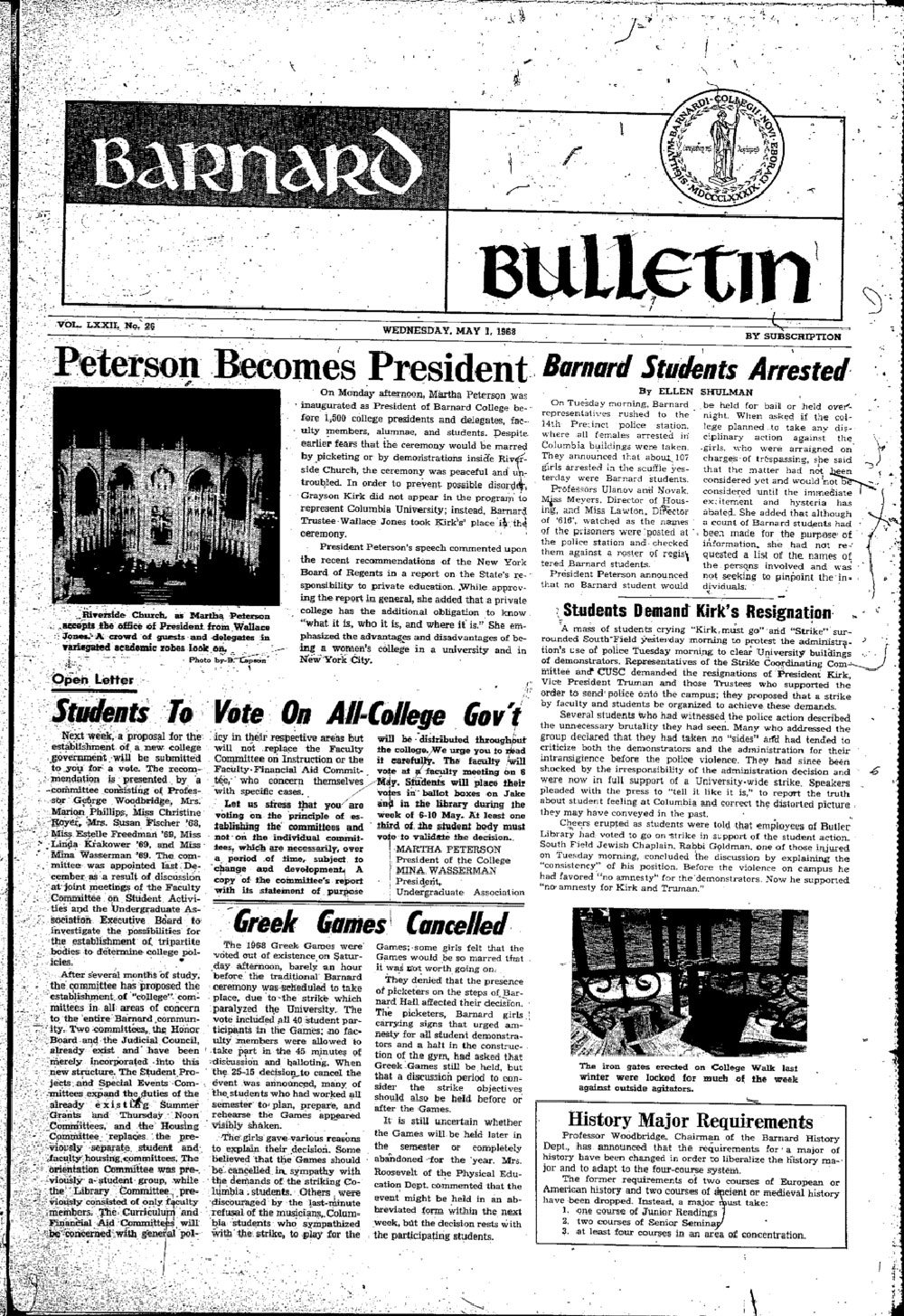
“A mass of students crying ‘Kirk must go’ and ‘Strike!” surrounded South Field yesterday morning to protest the administration’s use of police Tuesday morning to clear University buildings of demonstrators…Several students who had witnessed the police action described the unnecessary brutality they had seen.”
Among the students’ demands in 1968 was the resignation of President Kirk. University administrator’s responded to the student uprising by use of police force to remove students from occupied buildings. 107 Barnard students were arrested. Barnard President Martha Peterson ensured no Barnard student would be held on bail or overnight.
Barnard Archives and Special Collections

In the spring of 1968, Barnard sophomore Linda LeClair challenged the housing rules of the College by living off-campus with her partner, a Columbia College junior named Peter Behr. LeClair’s defiance of Barnard’s regulations reached the national spotlight as her story became publicized by the media and became part of a national dialogue surrounding the women’s liberation movement. LeClair was subject to a disciplinary hearing by the College, and in the summer of 1968 she received a letter from then Barnard President, Martha Peterson, with an ultimatum: LeClair could return to campus, but only if she agreed to abide by its housing policies. The conversation – and actions by students, staff, and faculty who picketed outside of her administrative trial – changed Barnard’s policies over time, but not before LeClair made the choice not to return to Barnard rather than accept its conditions for her return.
Barnard Archives and Special Collections
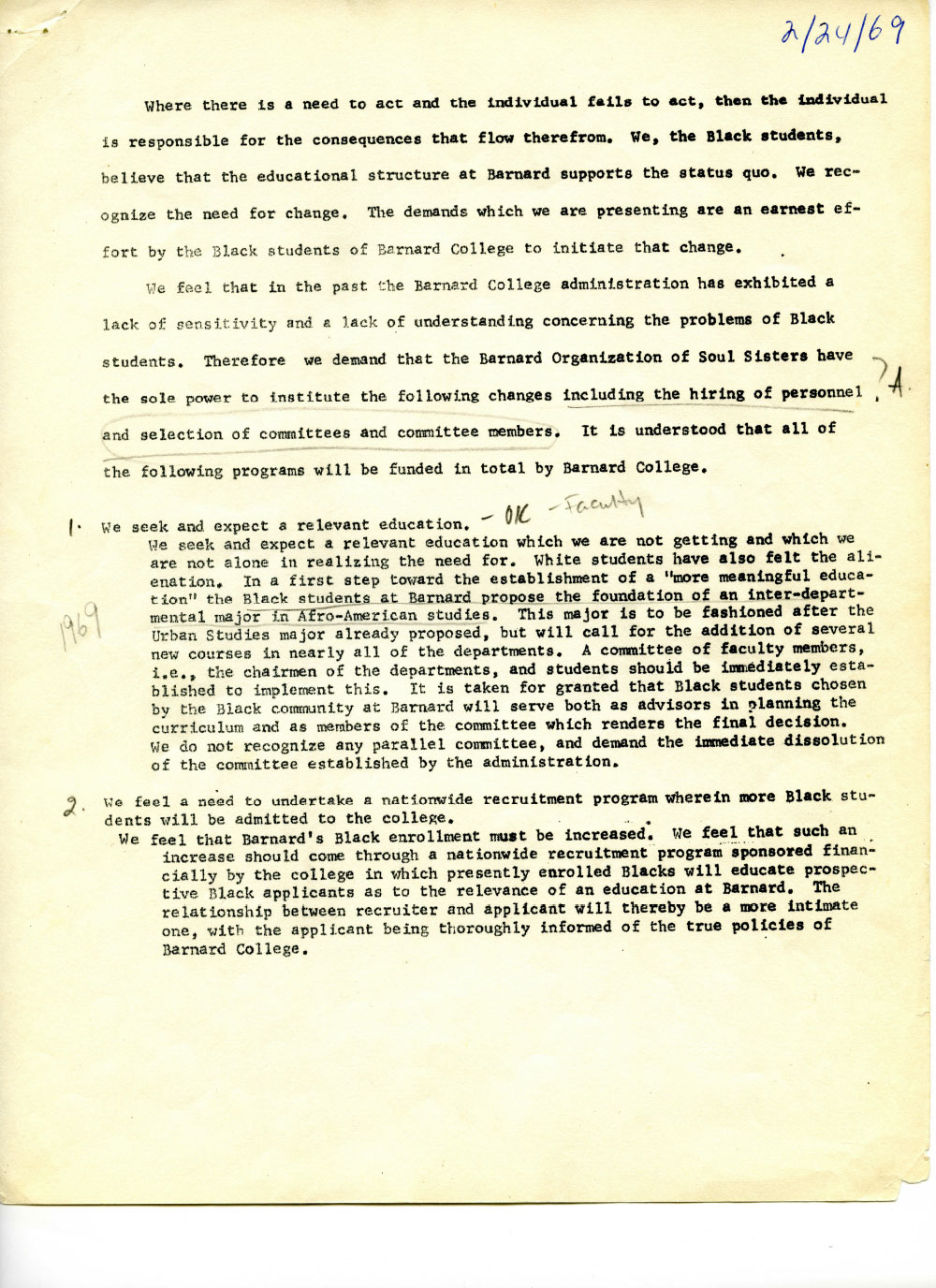
On February 24, 1969, the Barnard Organization of Soul Sisters issued a list of ten demands to the Barnard College Administration. B.O.S.S.’s list of demands achieved concrete outcomes within the semester. In Spring 1969, the administration agreed to grant B.O.S.S. provisional office and lounge space in Reid Hall. During the same semester, Barnard announced the appointment of three Black faculty members for the fall of 1969.
Barnard Archives and Special Collections
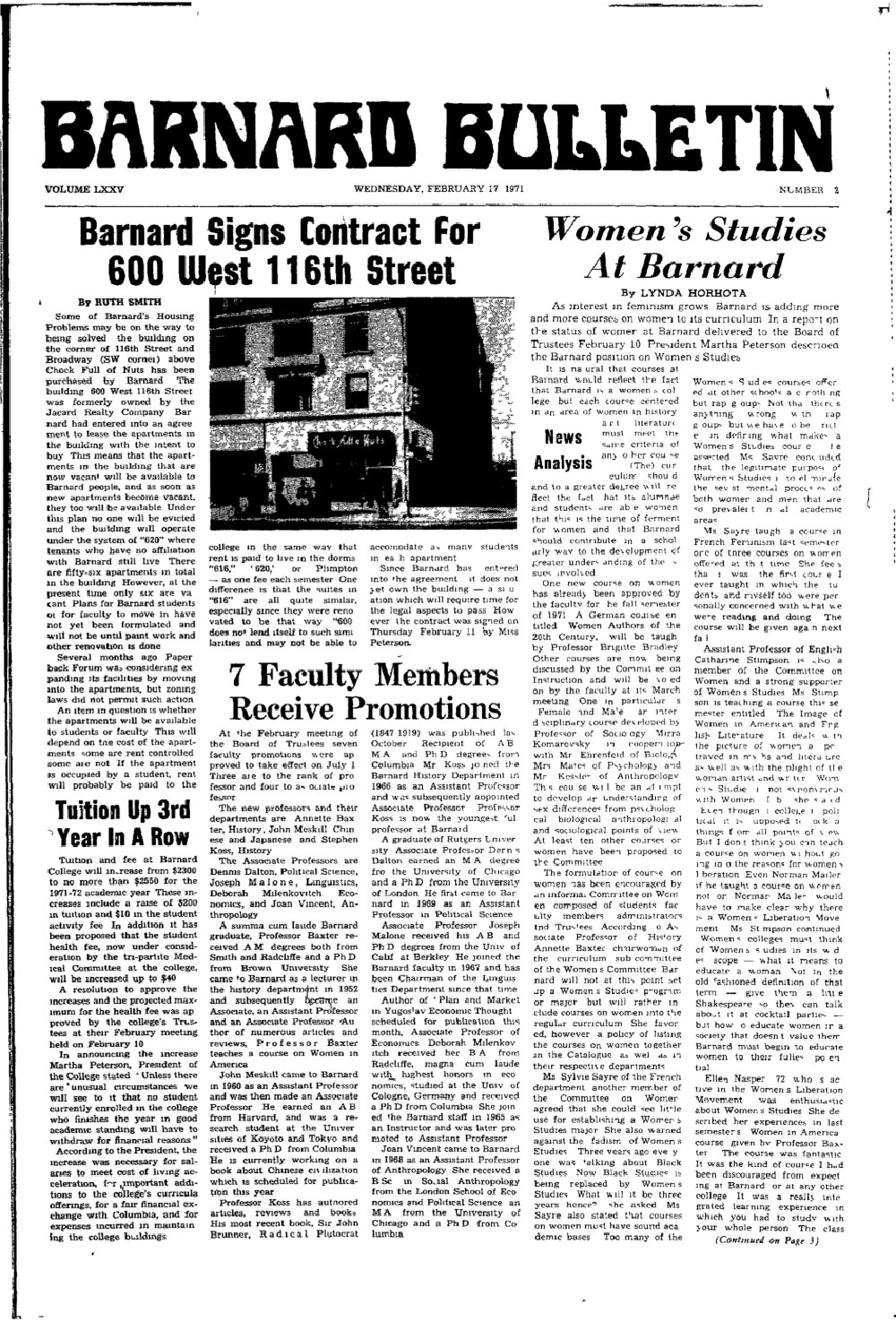
Though a full program for Women’s Studies wasn’t formalized until the late 1970s, following student demand, by 1971, Barnard began offering more curricular offerings in women’s studies.
Barnard Archives and Special Collections

“A mass of students crying ‘Kirk must go’ and ‘Strike!” surrounded South Field yesterday morning to protest the administration’s use of police Tuesday morning to clear University buildings of demonstrators…Several students who had witnessed the police action described the unnecessary brutality they had seen.”
Under the University regulations of the time, demonstrations were considered a violation. As the campus erupted in protest, the campus community came together to seek amnesty for individuals participating in the spring actions.
Barnard Archives and Special Collections

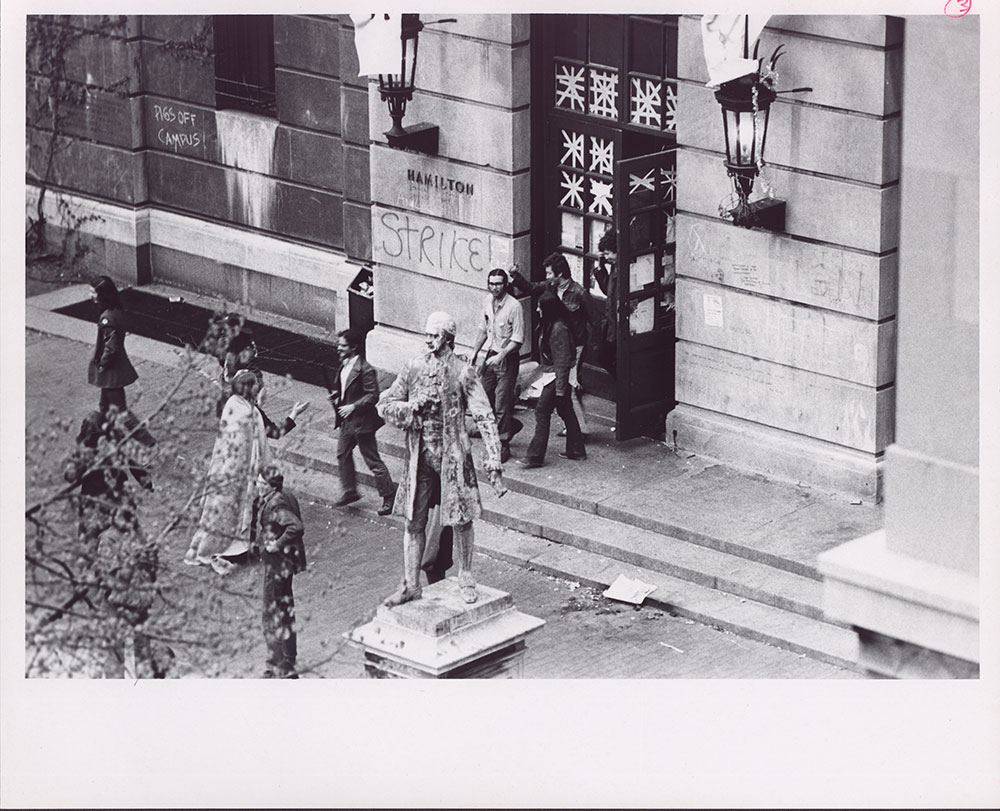
Hamilton Hall occupation
Columbia University Archives

Beginning on May 7th 1970, Barnard students joined the National Student Strike by organizing a strike onc ampus to oppose the Vietnam war. Why We Strike, published in June 1970 by the Barnard Strike Coalition, reconstructed the events of the strike and outlined the coalition’s three demands; 1) to end political repression, 2) to end the war in Vietnam, 3) and to end university war-related research. This piece, “Barnard Women’s Liberation Position Paper” appeared in Why We Strike
Barnard Archives and Special Collections
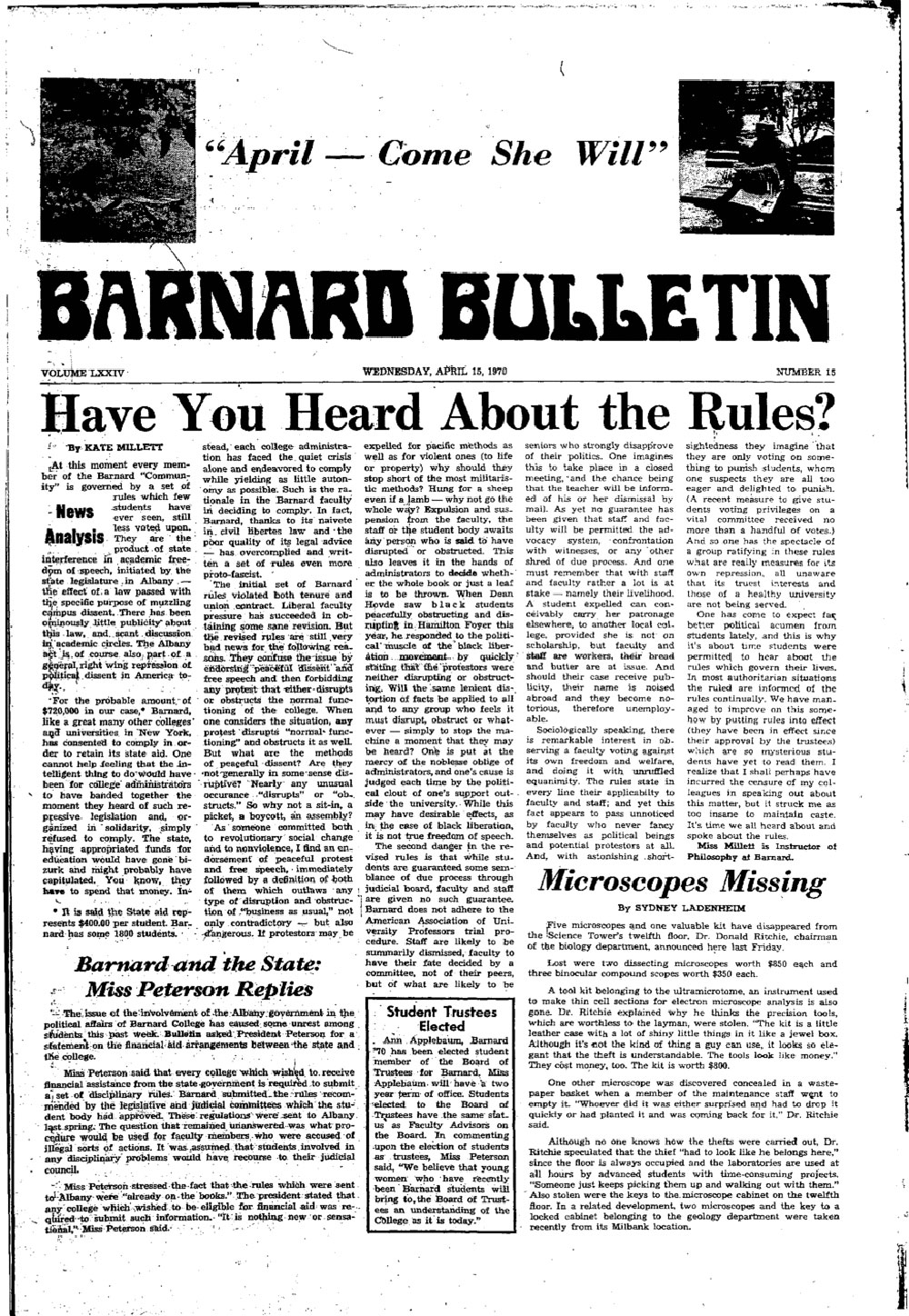
“Expulsion and suspension from the faculty, the staff or the student body awaits any person who is said to have disrupted or obstructed. This also leaves it in the hands of administrators to decide whether the whole book or just a leaf is to be thrown. When Dean Hovde saw black students peacefully obstructing and disrupting in Hamilton Foyer this year, he responded to the political muscle of the black liberation movement by quickly stating that the professors were neither disrupting or obstructing. Will the same lenient distortion of facts be applied to all and any group who feels it must disrupt, obstruct, or whatever—simply to stop the machine a moment that they may be heard?”
Kate Millet, who was later fired from her teaching position teaching English and Philosophy at Barnard for working to organize protesting students, writes a critical piece in the Barnard Bulletin on State efforts to curtail student free speech.
Barnard Archives and Special Collections
Post-1968
The images included below highlight our political present by framing contemporary protests against borders and securitization; detention and deportation; Black Lives Matter; and mass incarceration. Similar to previous generations of activists, student protests demonstrate a layered analysis of oppression; for example, demands to divest from fossil fuels link climate change denial to climate change’s impact on the global South, as well as environmental racism in the United States. Queer and trans activism rely upon intersectional feminist approach between these struggles by calling for an end to the policing and criminalization of Black, of color, indigenous, queer and trans folks—“No Justice, No Pride.” The political urgency of 1968 student activism remains alive and well on the Barnard campus.
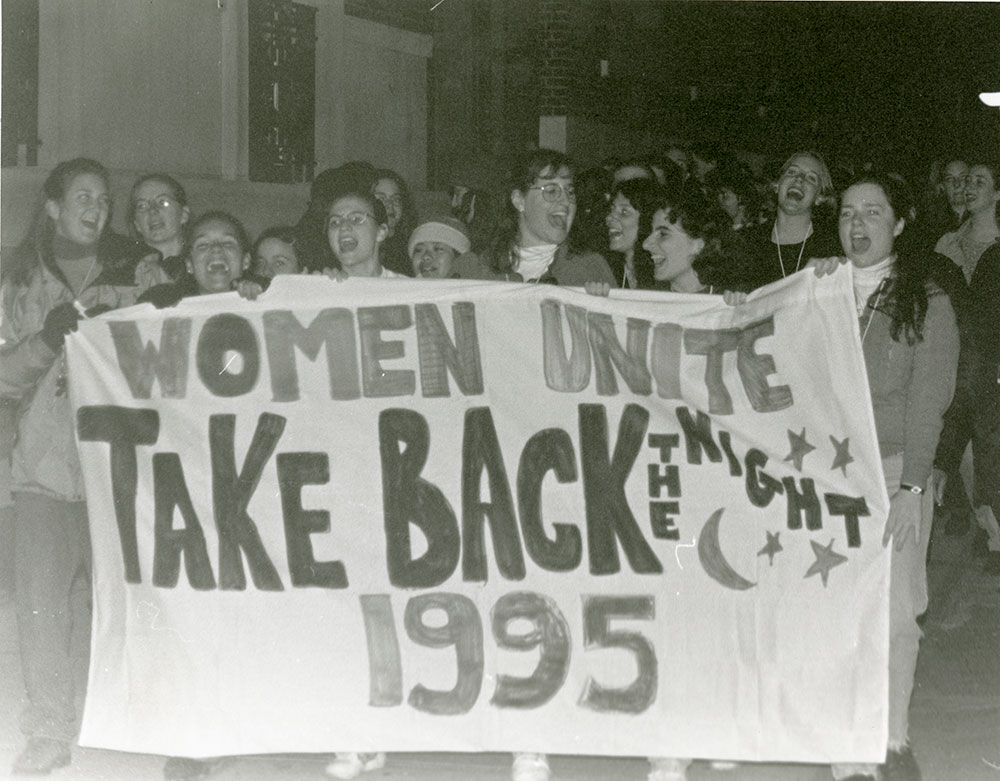
Take Back the Night holds marches, rallies, and vigils as a direct action against rape, sexual assault, and relationship violence. There has been an active chapter at Barnard College since at least the early 1990s.
Barnard Archives and Special Collections

Protestor outside of College during UAW strike on budget cuts, 1997
Barnard Archives and Special Collections
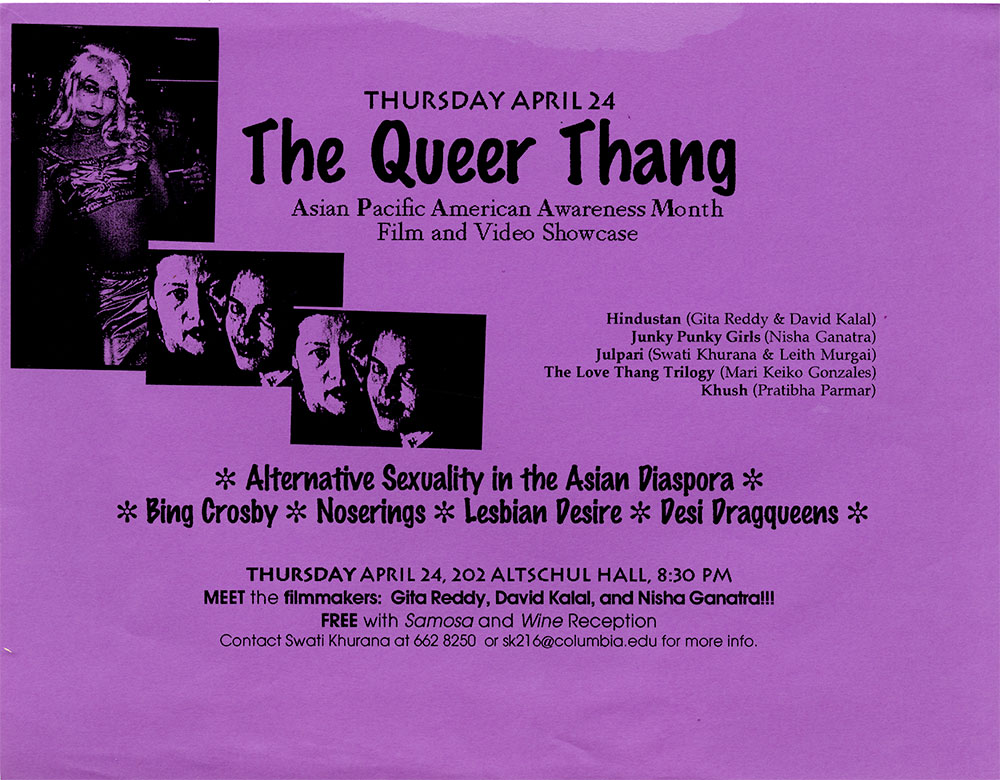
Asian Pacific Awareness Month and queer/trans of color visibility and performance on campus in 90s
Barnard Archives and Special Collections
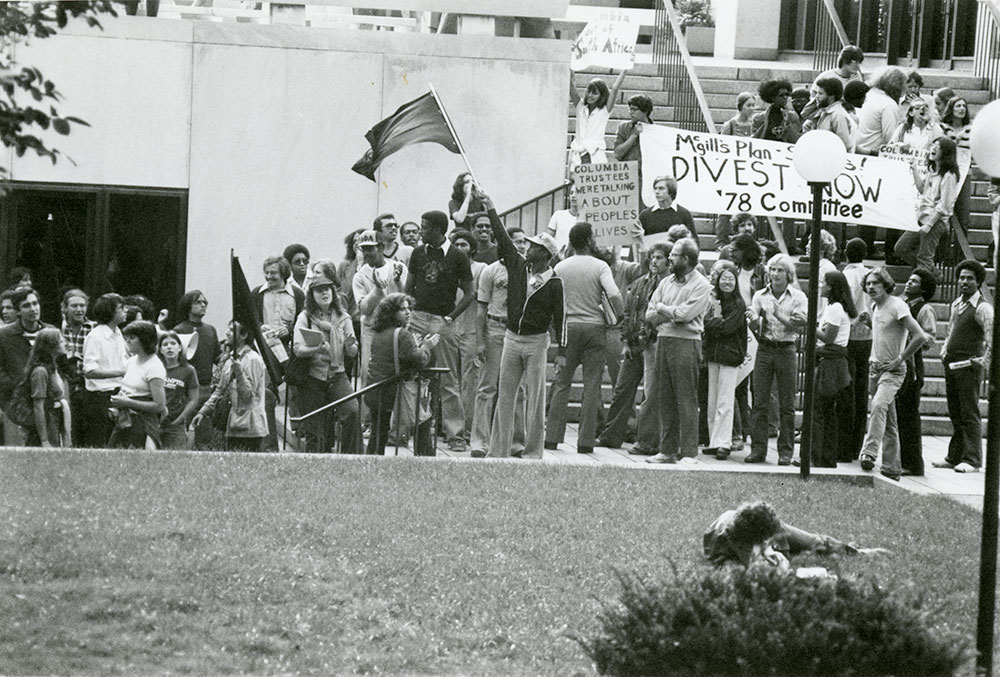
Students gather to call for Columbia University to divest from South African Apartheid, October 1978.
Barnard Archives and Special Collections.

Barnard students hold signs reading “Indict America: Black Lives Matter,” and the names of Black people killed by the police.
Photo by Alay Syed

Protests to declare Barnard and Columbia sanctuary campuses
Photo by Undocu
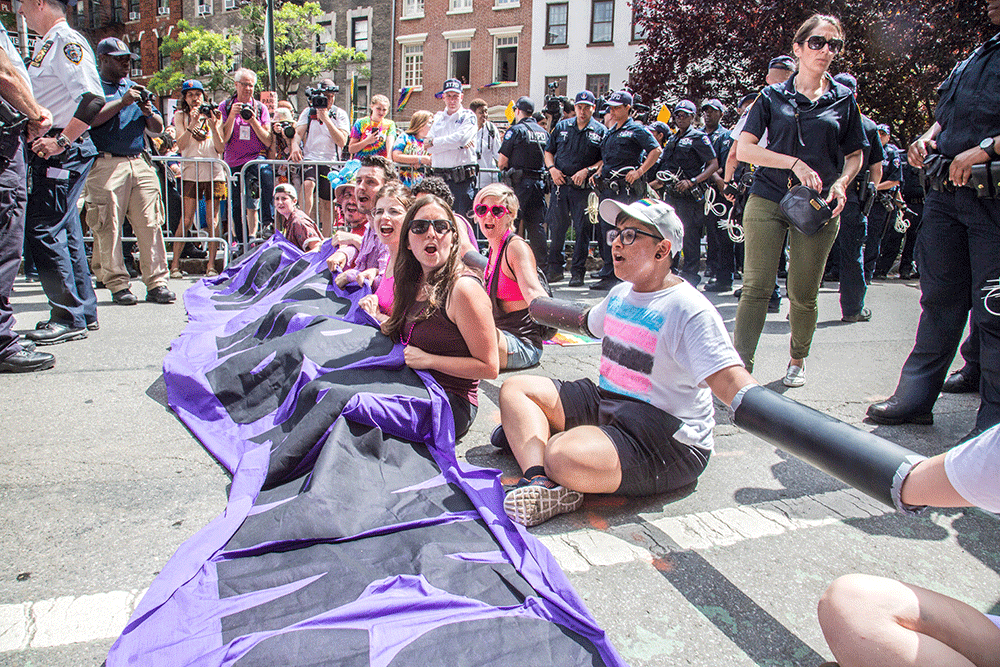
Protestors disrupt the annual Pride parade in NYC. No Justice No Pride is an international movement that utilizes direct action to disrupt the whitewashing, pinkwashing, corporatization, and mainstreaming LGBTQ movements.
Photo Credit to David Moriya
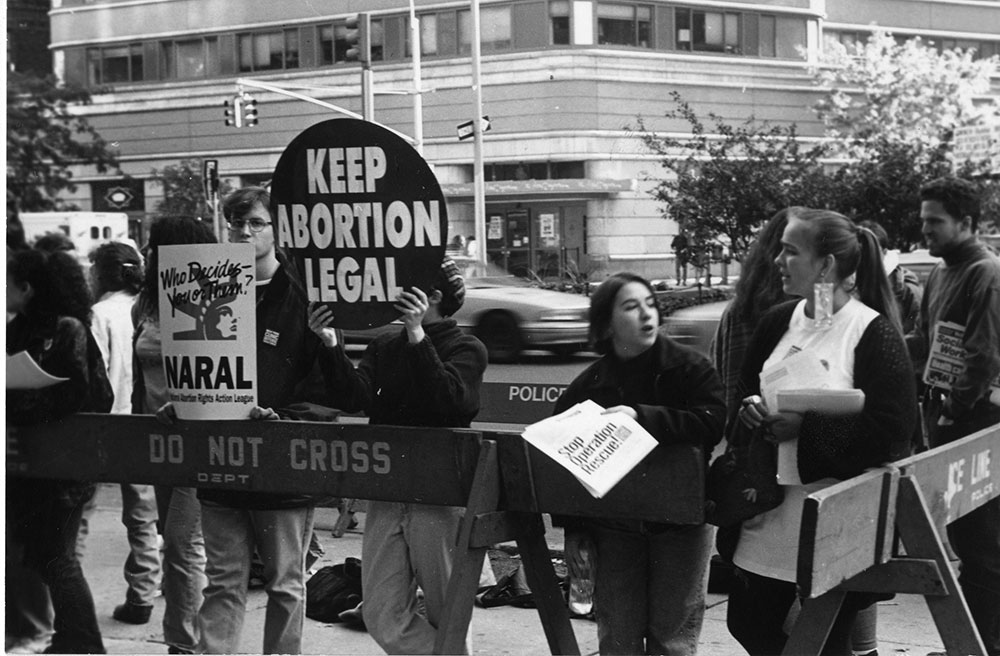
Unidentified students protesting Operation Rescue (anti-choice group), circa 1980s-90s.
Courtesy of the Barnard Archives and Special Collections, Photograph taken by Wanda Chan, class of 1997.
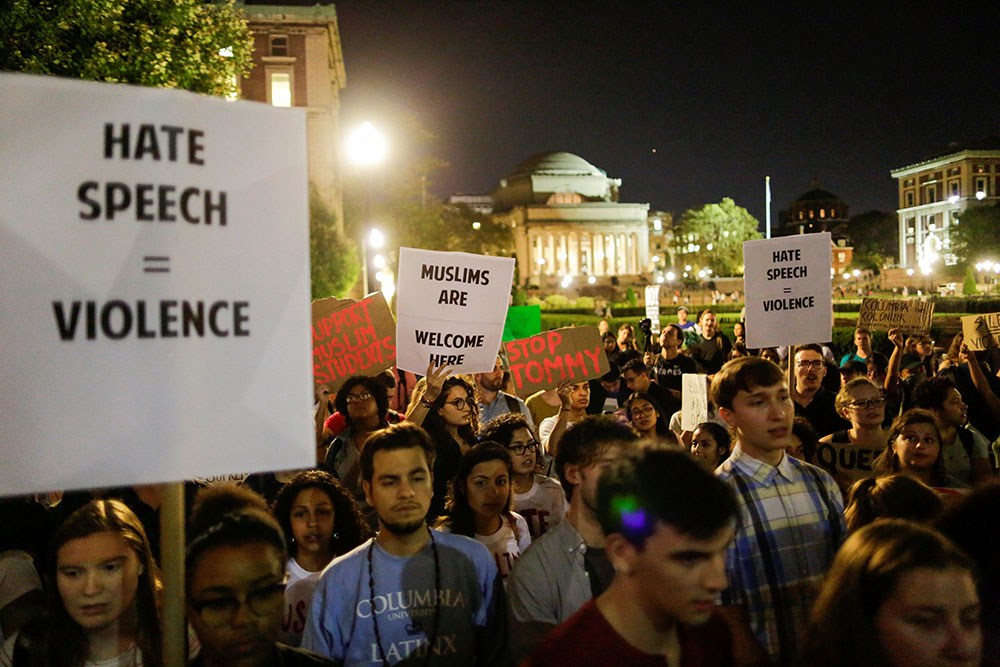
In the Fall of 2017, right wing speakers, including white supremacist Tommy Robinson, were invited to Columbia’s campus by the Columbia University College Republicans. Protests surrounded these events leading to a number of students being threatened with disciplinary action for their participation in the protests.
Photo by Barnard Columbia Solidarity Network
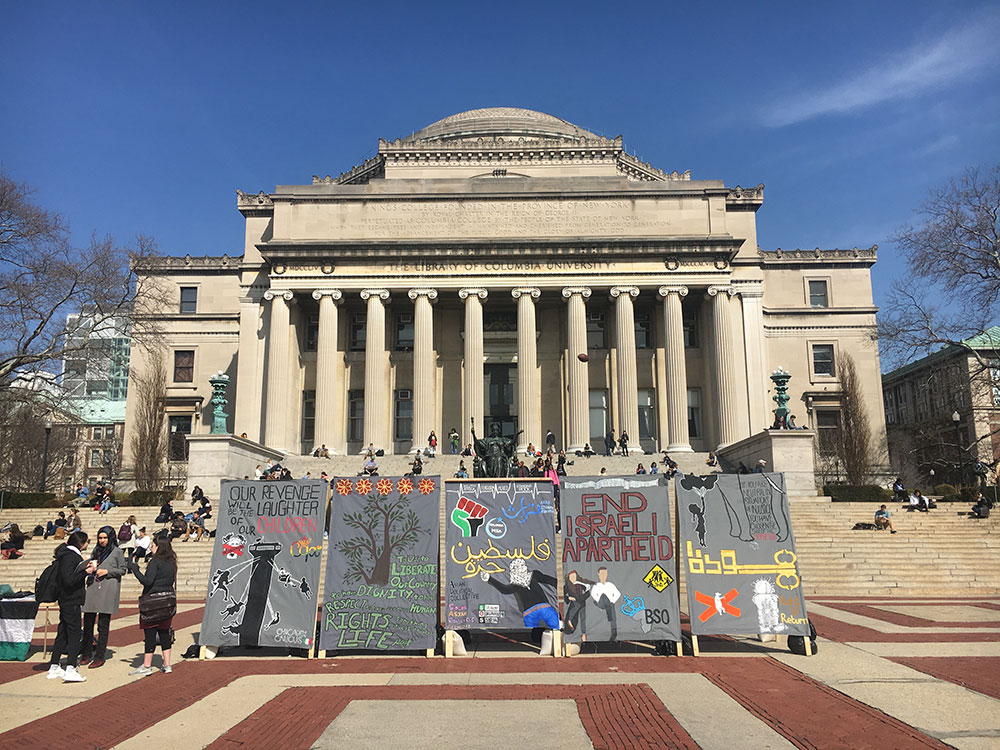
Students for Justice in Palestine
Photo Credit to SJP

Protestors march for reproductive freedom, circa 1990s. Woman holding banner: “Reproductive freedom and justice for all!”
Barnard Archives and Special Collections

During pre-protest meeting in Diana LL2, student of color holds statement regarding demonstration during Midnight Breakfast.
Photo by Alay Syed
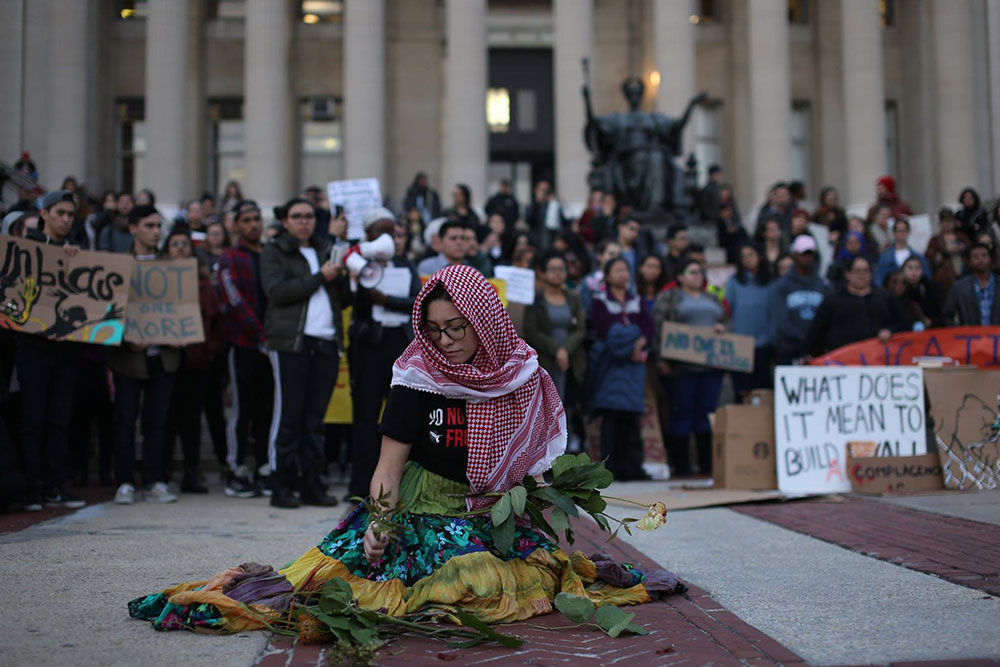
Following the 2016 election and immediate violent rhetoric and actions against undocumented persons in the United States, students participated in a national walkout in protest of the election and to demand that Barnard and Columbia become sanctuary campuses.
Photo by Undocu
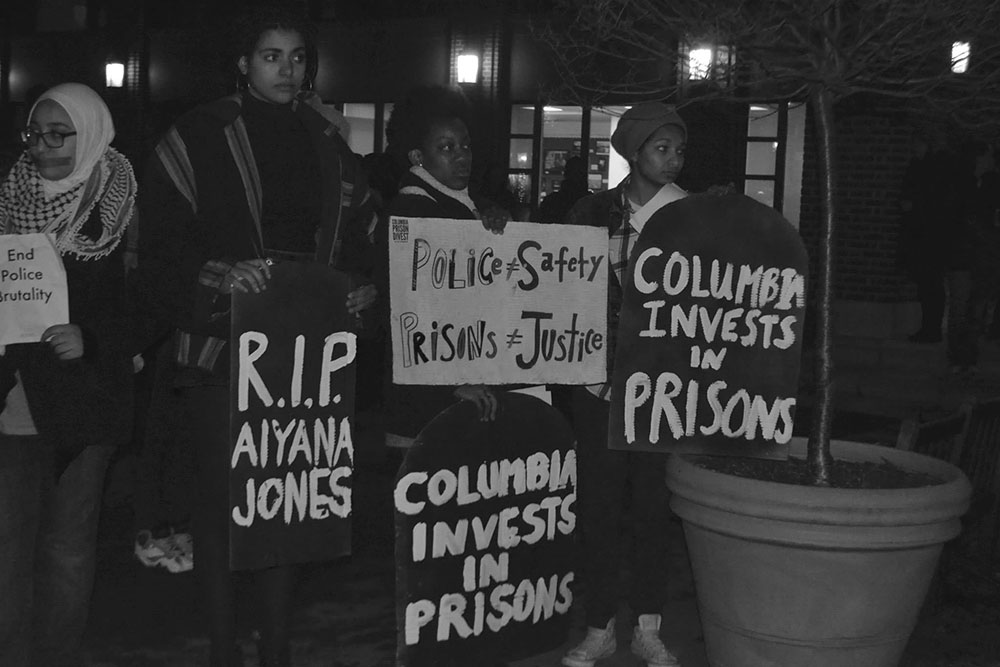
Here, students protest Columbia University investments in private prisons. In 2015, Columbia became the first university to divest from private prisons.
Photo by SAMI
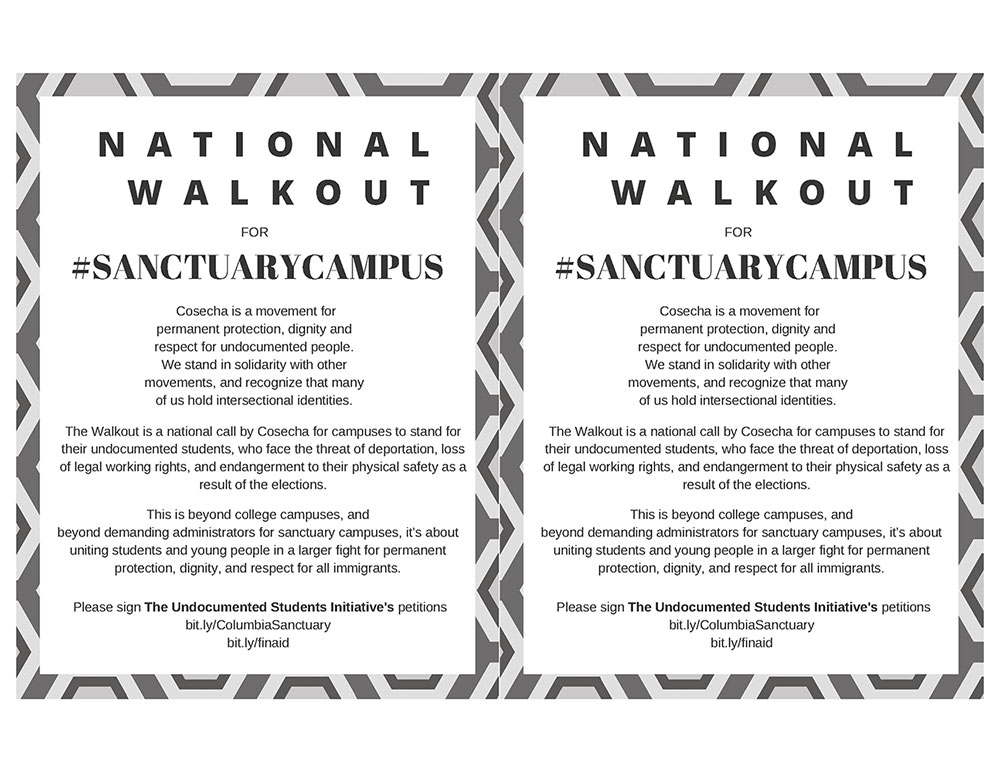
Undocumented Students Initiative (now UndoCU) and Barnard Columbia Solidarity Network collaborate with Cosecha in a university-wide walkout at 3pm on November 16, 2017. Students and faculty demand that Columbia establish itself as a sanctuary campus following the election.
Photo by Undocu
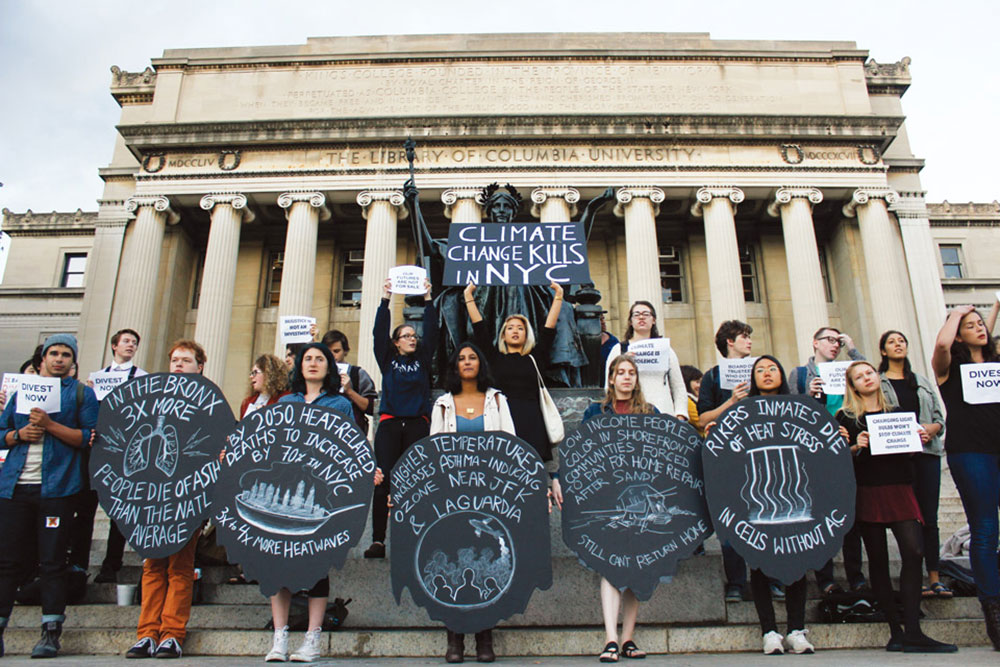
Barnard Divest “seek[s] to educate the broader Barnard community on the injustices that face marginalized women…which are exacerbated by climate change…”
Following a multi-year campaign by Divest Barnard, the Barnard Board of Trustees voted to divest from fossil fuel climate change deniers.
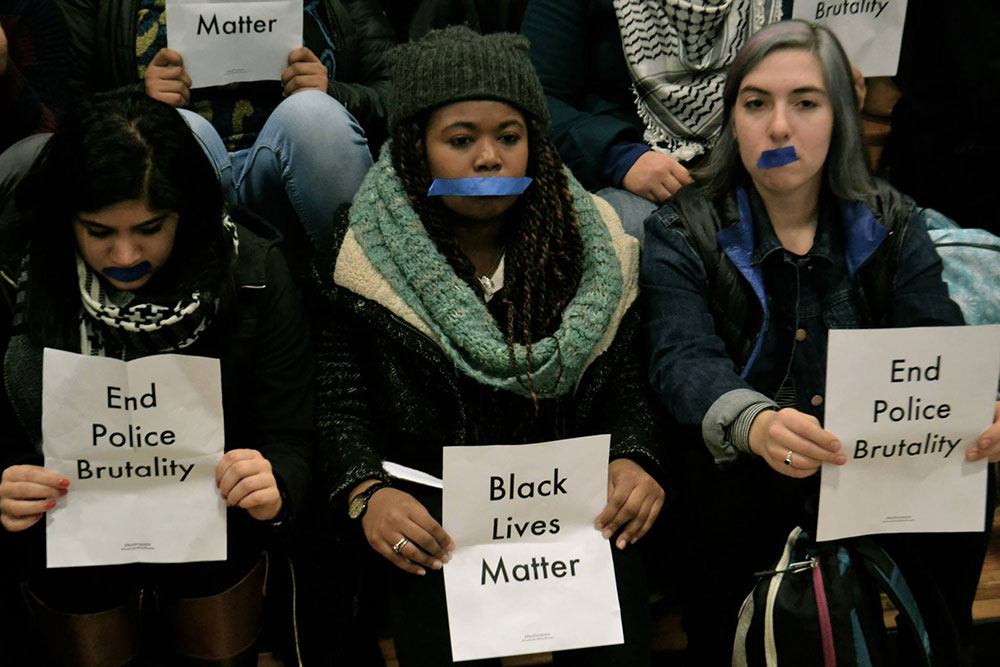
Black Lives Matter protest
Photo by Alay Syed
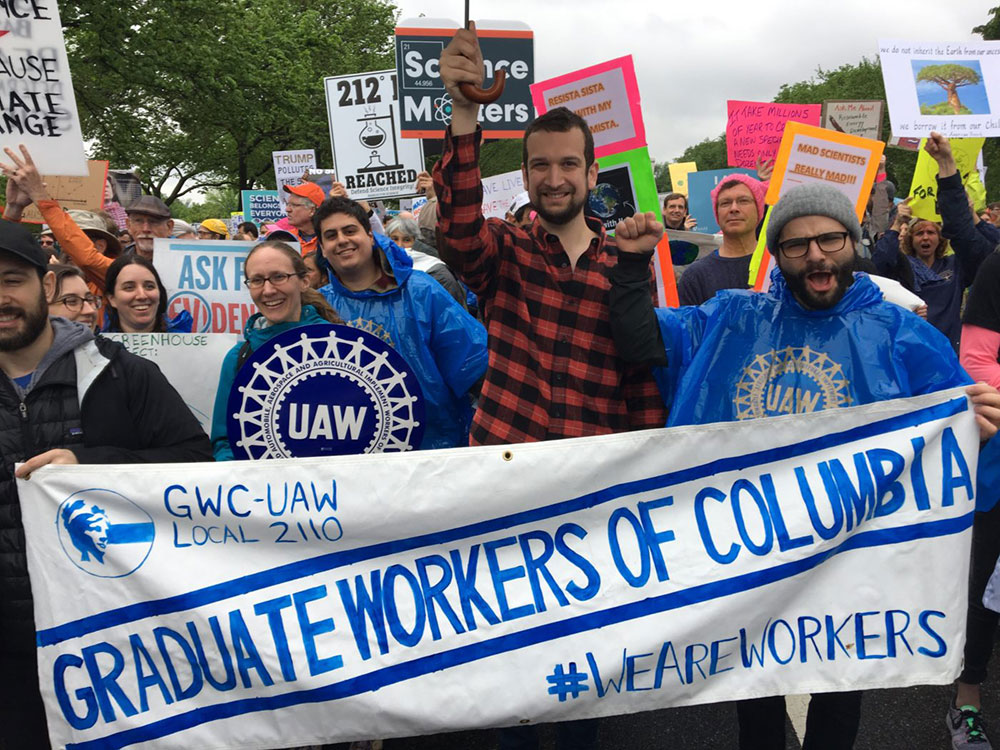
Beginning in 2014, graduate student workers at Columbia began to organize a union. In 2017, Columbia University administration announced that they will not fulfill their legal obligation to collectively bargain with GWC-UAW.
Photo by Columbia Contingent Faculty UAW
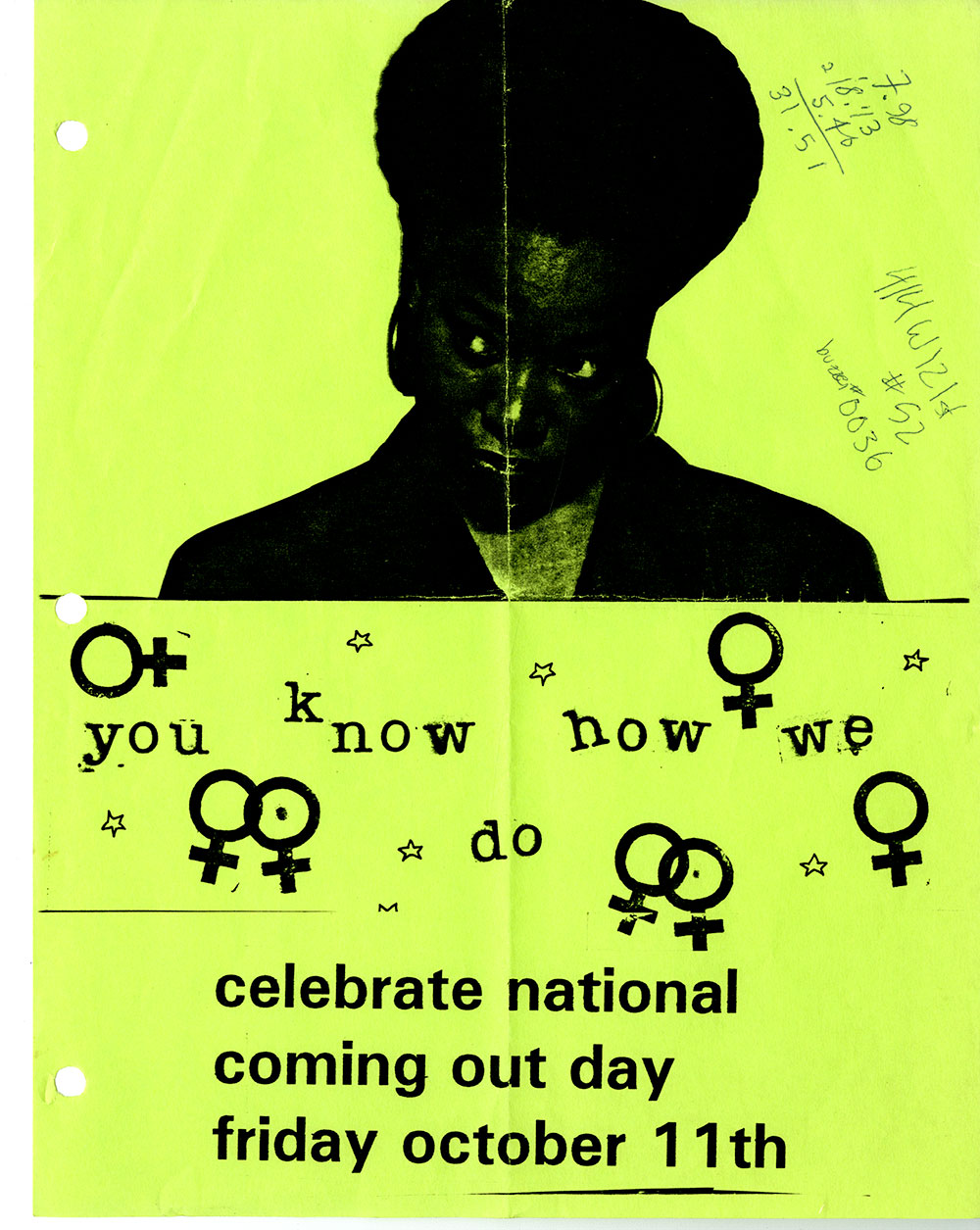
Representatives from Lesbians and Bisexuals in Action write “At Barnard… National Coming Out Day was a representation of not just white, middle class women, but women of ethnic and cultural backgrounds not traditionally represented in the gay community.”
Photo by David Moriya
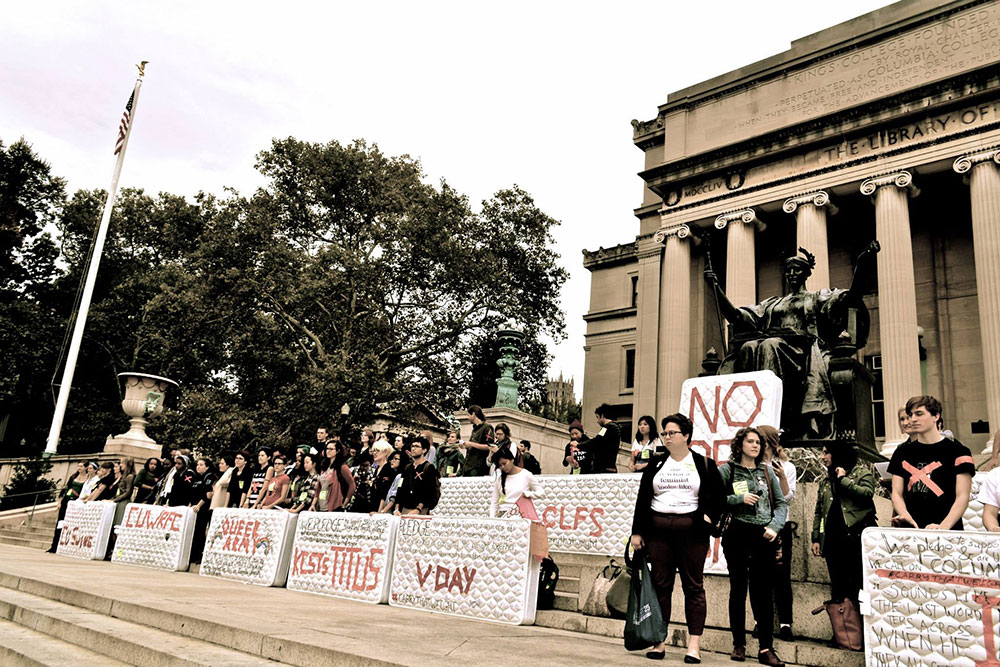
No Red Tape “work[s] to end sexual and domestic violence in our campus communities because we envision a world free of violence and oppression.” In 2014, No Red Tape organized an international day of action inspired by the protest and artwork of Emma Sulkowicz.
Photo by No Red Tape
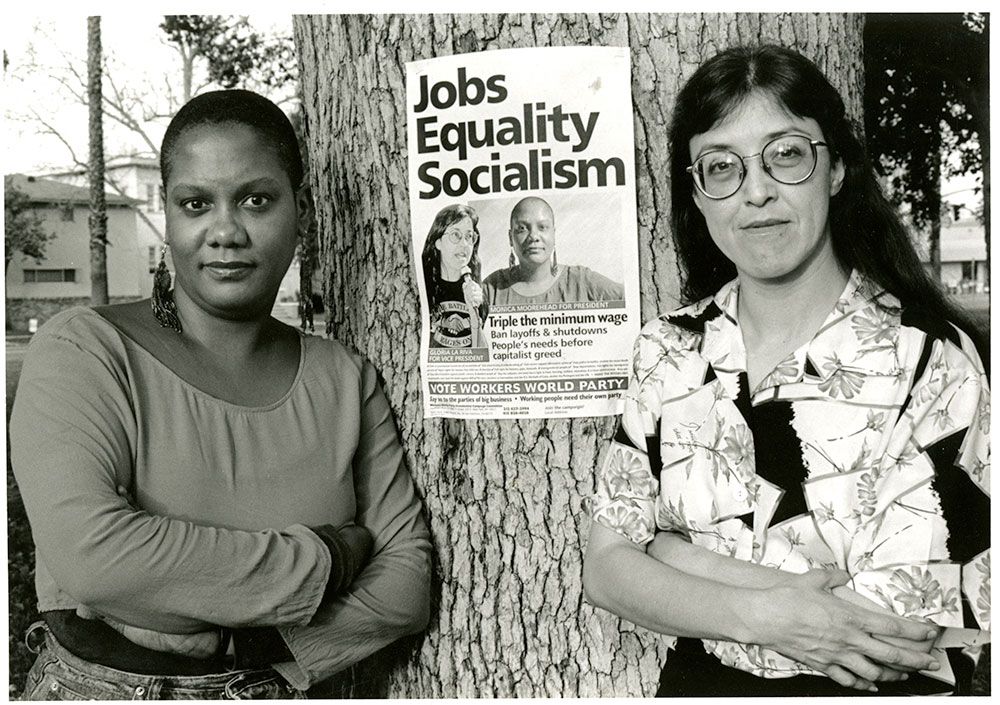
Gloria La Riva and Monica Moorehead posing next to campaign poster for Workers World Party, Presidential campaign, 1990s
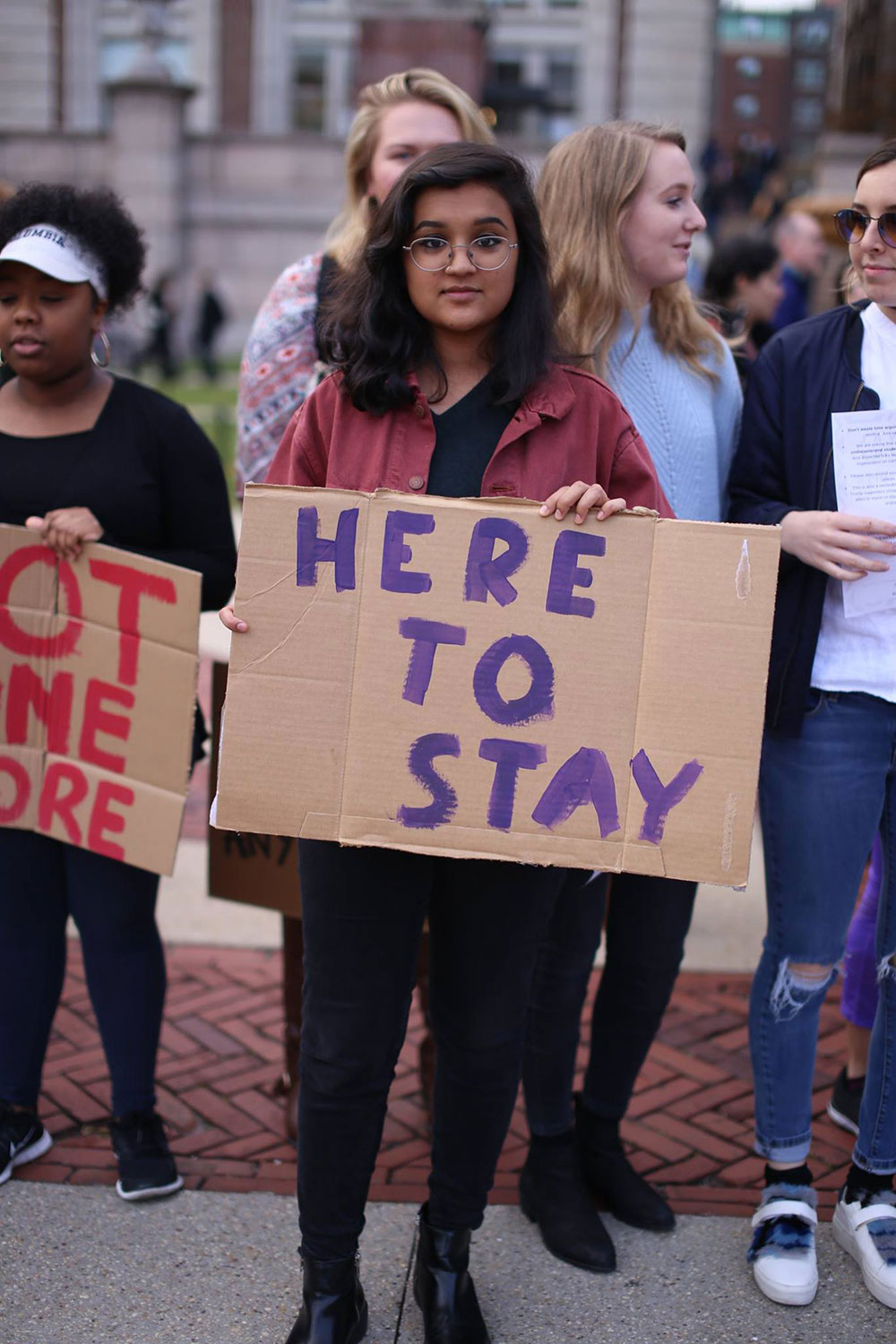
Protests to declare Barnard and Columbia sanctuary campuses
Photo by Undocu
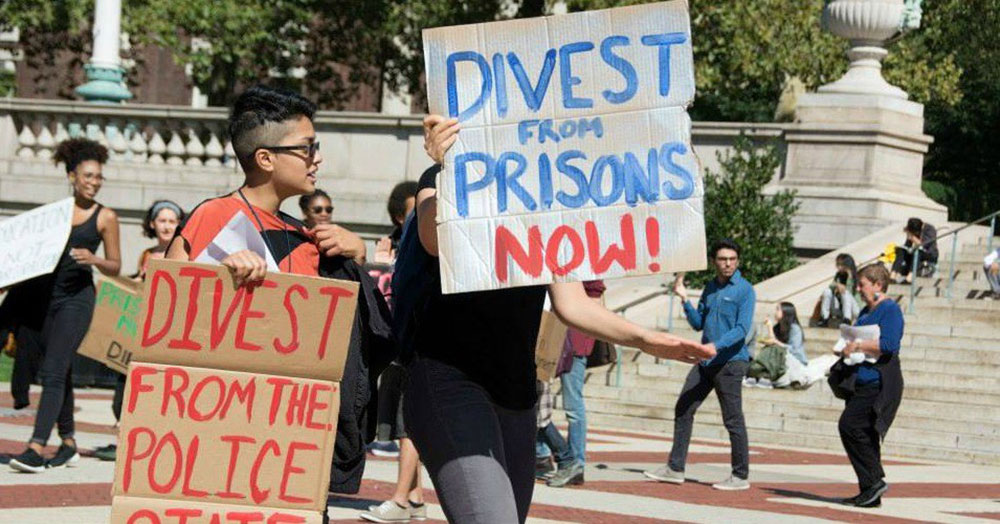
Students from Students Against Mass Incarceration (SAMI) demand Columbia’s divestment from prisons.
Photo by Alay Syed